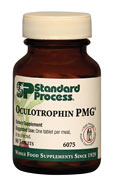Cataract

|
Deepak Chopra |
Cataract is a common eye condition when there is clouding of the eye's natural lens. For people who have cataracts, seeing through cloudy lenses is a bit like looking through a frosty or fogged-up window. Clouded vision caused by cataracts can make it more difficult to read, drive a car (especially at night) or see the expression on a friend's face.
Cataract is the most common cause of vision loss in people over age 40 and is the principal cause of blindness in the world. In fact, there are more cases of cataracts worldwide than there are of glaucoma and macular degeneration combined, according to Prevent Blindness America (PBA). Today, cataracts affect more than 22 million Americans age 40 and older. And as the U.S. population ages, more than 30 million Americans are expected to have cataracts by the year 2020, PBA says.
- Clouded, blurred or dim vision
- Increasing difficulty with vision at night
- Sensitivity to light and glare
- Seeing "halos" around lights
- Frequent changes in eyeglass or contact lens prescription
- Fading or yellowing of colors
- Double vision in a single eye
Age-related cataracts cause a slow, painless loss of vision typically not associated with other signs or symptoms. The first sign of cataracts is usually a significant loss in transparency in a small region of the lens. This affects one’s ability to determine the detailed contours of objects in bright light during the day or when viewing objects near bright light at night. In addition, it leads to a loss of contrast sensitivity, which is the ability to distinguish between relative differences in light intensity
Similar to a loss in contrast sensitivity is the increased incidence of glare. This occurs when cataracts begin to cause an aura around objects, and it happens most often during the daytime. Glare, which can occur in all forms of cataract, can develop anywhere on the optic lens. In many cases of nuclear cataract formation, there is also a change in how light bends, or refracts, as it moves from outside the eye through the lens. This is termed myopic shift, and is clinically defined as a hardening of the lens that causes a change from farsightedness to nearsightedness.
what causes cataracts and what to do.











